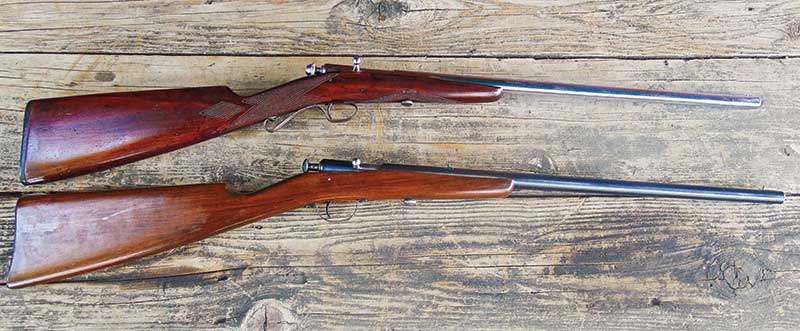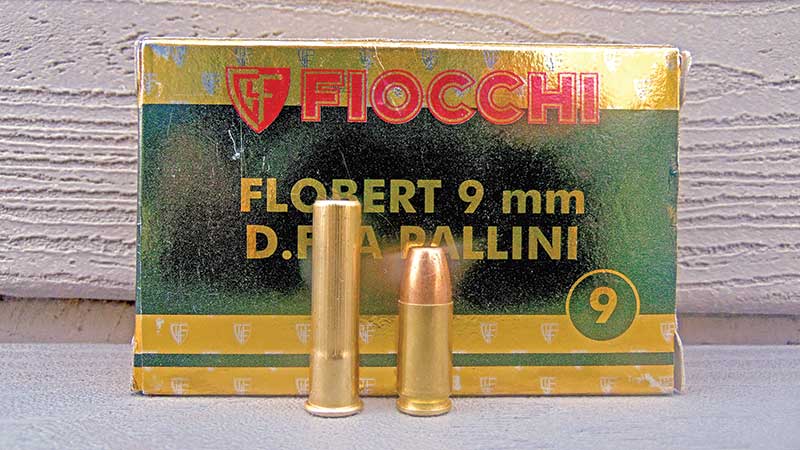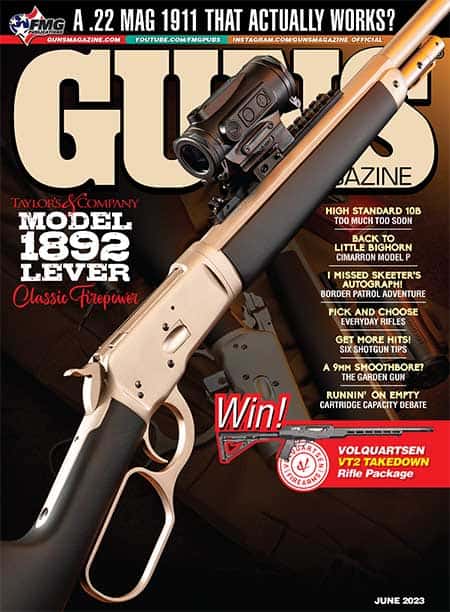Winchester Model 36
Smoothbore 9mm
The Original Garden Gun
If a .410 simply isn’t meeting your standards of sub-gauge snobbery anymore, may I suggest Winchester’s vintage Model 36? What we’re talking about here is a single-shot bolt action chambered for 9mm Flobert Rimfire shotshells.
At first glance, you could easily mistake it for any number of vintage Winchester single-shot .22s of the pre-war era. That is, until you got a look at 1) the bore size and 2) the lack of rifling.
History
The Model 36 was produced from 1920 to 1927. About 20,000 were made. Apparently, it was a fairly specialized item with specialized appeal, reflected by its production numbers and present-day availability. By comparison, Winchester’s Model 58 .22 single shot (1928-1931), another descendant of the Model 1900 series, had a production run of slightly less than 39, 000 in a considerably shorter time frame.
Our particular specimen, owned by hardcore Winchester aficionado John Wightman, features a minimally adorned one-piece stock of walnut (gumwood was also used) and a chubby 18″ barrel someone along the line of ownership had elected to chrome-plate, giving the little M36 an undeniably distinctive appearance at the cost of substantially reducing collector appeal. Real-world value of an M36 generally ranges between $400 and $800, with a truly minty specimen going considerably higher.
Rimfire 9mm Shotshell
Fortunately, 9mm RF Flobert ammo is still offered by Fiocchi, although you probably wouldn’t want to use it for a high-volume day of “shotgunning.” Wanna crab about the retail prices of .410 or 28-gauge ammo? Try this: A 50-round box of Fiocchi 9mm Flobert shells lists at $59.99 through Midway. This boils down to around $1.19 a pop for the pleasure of launching one-quarter of No. 9 shot at 600 fps.
The quarter ounce, incidentally, translates to 146 pellets. Weight-wise it equals slightly more than 109 grains if you’d care to compare it to a solid 9mm Parabellum bullet.
However, as anemic as it may sound, it’s worth recalling CCI’s .22 Long Rifle shotshell — designed for short range pests as well — contains a mere 31 grains worth of No. 12 “rat shot.”
The choke constriction is a bit tough to ascertain. But to give you an idea, those No. 9 shotshells delivered (roughly) a 6″ pattern at 15 feet — plenty for ironing out a rat, gopher or bird with way less noise than a .410 and without the ricochet or ranging hazards of a .22.
Fiocchi also offers ammo — also through Midway — employing No. 6 and No. 7.5 shot.
But if you go with the larger shot sizes, your pattern density will suffer, as in 87 pellets in No. 7.5 and 56 in No. 6. Given the limited sphere of effectiveness from 9mm shotshells, No. 9s would seem to be about the best compromise.
The Model 36 is obviously not an optimum choice for aerial targets but I simply couldn’t resist trying it out a couple of times at the No. 7 low house skeet station. I actually managed to chip one or two incoming birds after I let them come as close as I dared.
As might be expected, there were no crushing 8-ball “puff of smoke” hits. Normally, No. 9s are a dandy size for skeet, but a mere quarter ounce of them at slightly more than half the speed of a standard 20-gauge target load presents something of a challenge on clay birds. Particularly from a 2 ¾-lb. gun with a length of pull around 11″.
Dare To Dream
But, you’re only limited by your own imagination in exploring recreational uses for a Model 36 and you are free to think beyond balloons and beer cans. Many decades ago, I read an article in an old gun magazine by a rather innovative gunwriter who was addicted to wingshooting dragonflies over his backyard pond with his Model 36.
But the little smoothbore is probably best employed for what it was designed for — filling a “garden gun” niche and eliminating furred or feathered pests discreetly. In fact, the M36 was sometimes employed for harvesting museum specimens when preserving pelt (or more likely plumage) was a consideration.
But the concept of a garden gun isn’t altogether outdated. Interestingly enough, in fact, it’s been updated. The 9mm Flobert RF is also chambered in Chiappa’s folding break-open Little Badger which, oddly enough, is billed as a “survival gun.” It’s longer and bit heavier than our vintage chromed-out Winchester but it’s probably easier to lay hands on. And, with an MSRP of $356, it’s less pricey than a vintage Winchester M36.






